Deserts are often associated with vast stretches of sand, scorching heat, and a lack of vegetation. However, hidden beneath the seemingly barren landscapes lies a fascinating and mysterious world that few are aware of – desert mushrooms.
These enigmatic fungi have evolved unique strategies to survive in the harsh conditions of arid regions, defying conventional notions about where life can thrive. Despite their inconspicuous appearance, desert mushrooms play crucial roles in ecosystem dynamics, soil health, and even human cultures
In this article, we will delve into the captivating realm of desert mushrooms, exploring their adaptations, ecological significance, and the extraordinary diversity they exhibit across different deserts around the globe.
List of Desert Mushrooms
1. Desert truffles
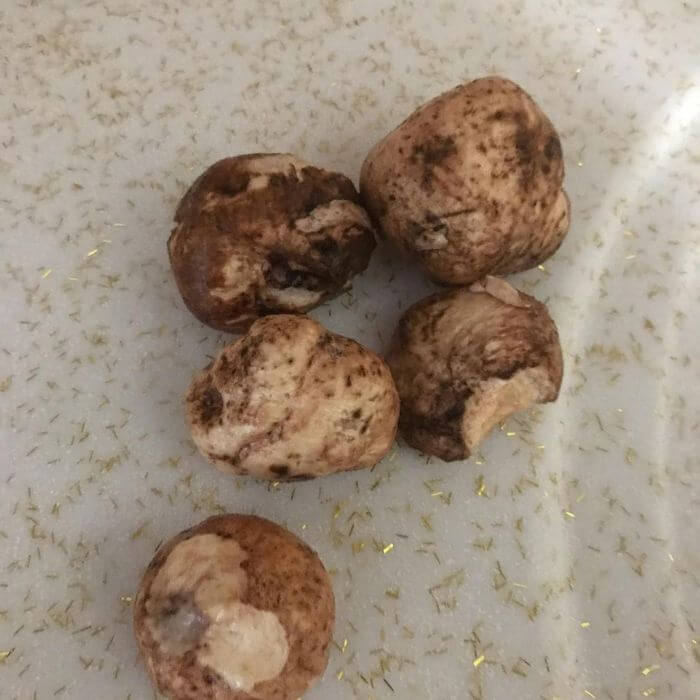
source: kalkan888
Desert truffles, also known as Terfeziaceae, are a unique and fascinating type of fungi that thrive in arid regions with sandy soils.
Unlike traditional mushrooms that grow in moist environments, these truffles have adapted to survive in harsh desert conditions. They are typically found in warm desert areas such as the Sahara Desert or Arabian Peninsula.
These desert truffles have a distinct appearance and texture compared to their counterparts found in more temperate climates.
They often have a rough and wrinkled exterior, which helps them retain moisture in the arid environment. The color of these truffles can vary from pale white to dark brown or even black.
Despite their unassuming appearance, desert truffles possess an incredible flavor profile that has made them highly sought after by chefs and food enthusiasts alike.
Their taste is often described as earthy, nutty, and slightly sweet. Due to their scarcity and difficulty in cultivation, these delicacies are considered a culinary treasure among connoisseurs.
Desert truffles play a significant role not only in gastronomy but also as an important part of local ecosystems.
Their mycorrhizal relationship with plants helps improve soil fertility by facilitating nutrient absorption for surrounding vegetation. Furthermore, they serve as a valuable food source for animals living in the desert ecosystem.
2. Podaxis pistillaris
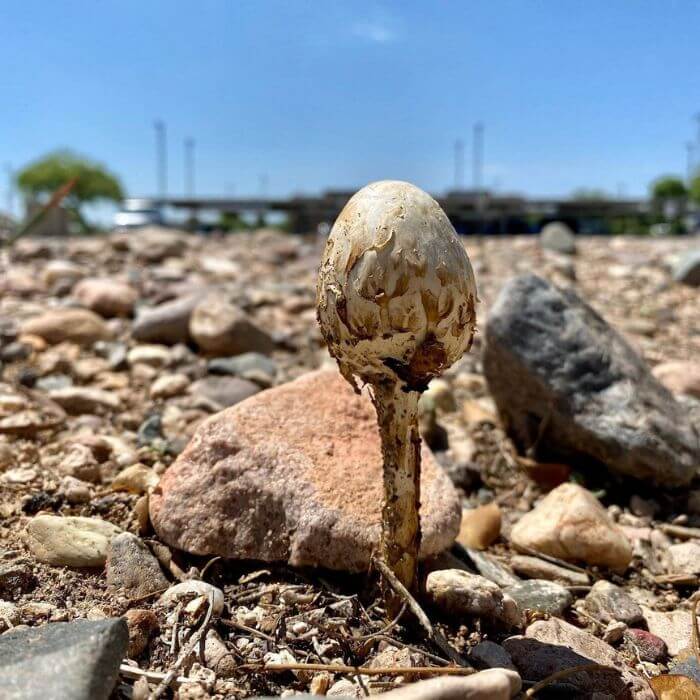
source:hungry.hobbit
Podaxis pistillaris, commonly known as the desert mushroom or long-stemmed earthstar, is a fascinating species that thrives in arid environments.
Unlike traditional mushrooms, which typically grow in damp and shaded areas, Podaxis pistillaris has adapted to survive in the harsh conditions of desert landscapes. This unique fungus is characterized by its long, slender stem and distinctive star-shaped cap that splits open to disperse its spores.
One of the most remarkable features of Podaxis pistillaris is its ability to obtain moisture from the soil through specialized structures called mycelium.
These thread-like structures spread underground and serve as a network for absorbing water from even the driest soils.
This adaptation allows the desert mushroom to thrive in regions where other organisms struggle to survive due to limited water availability.
In addition to their impressive adaptability, desert mushrooms like Podaxis pistillaris play an essential ecological role in arid ecosystems.
They contribute to nutrient cycling by breaking down organic matter and aiding decomposition processes. Furthermore, these fungi form symbiotic relationships with certain plants, helping them access nutrients such as phosphorus from the soil. Overall, Podaxis pistillaris serves as a captivating example of nature’s ability to adapt and thrive under extreme conditions while contributing vital ecological services within their habitat.
3. Astraeus hygrometricus (False Earthstars)
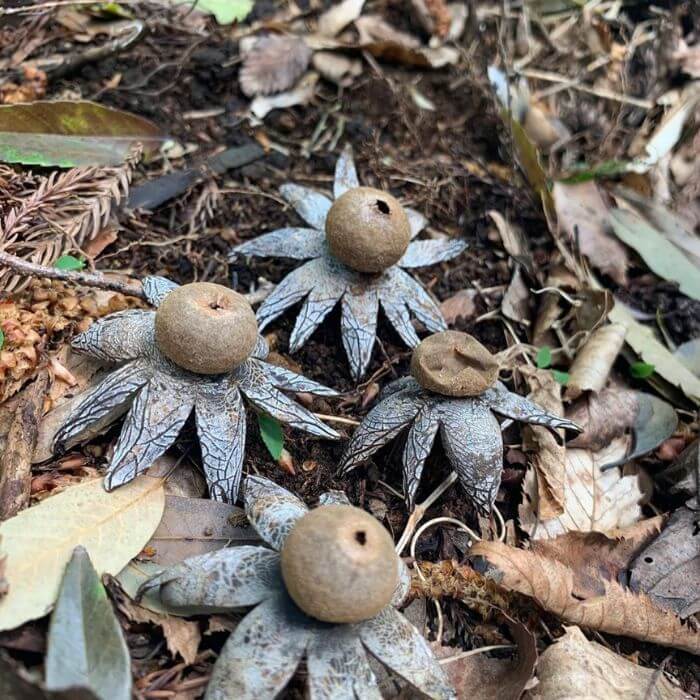
source: dokosokokinoko1015
Astraeus hygrometricus is a fascinating species of mushroom commonly found in desert regions. Known for its unique appearance and behavior, this mushroom has earned the nickname “the false earthstar.”
Its distinctive feature is the way it opens up like a star when it rains, revealing a spore-bearing sac inside. This process is thought to be an adaptation to maximize the dispersal of its spores during periods of moisture.
Despite its ability to survive in arid environments, Astraeus hygrometricus remains relatively understudied compared to other mushrooms. However, recent research has shed some light on its ecological role in desert ecosystems.
It has been discovered that this mushroom forms mutualistic associations with certain tree species, helping them enhance their nutrient uptake and water absorption capacities.
Additionally, some studies have suggested that Astraeus hygrometricus may possess medicinal properties due to the presence of bioactive compounds within its fruiting bodies.
Overall, Astraeus hygrometricus stands out as an intriguing organism within the realm of desert mushrooms.
Its unique shape and behavior make it visually appealing, while its ecological interactions and potential medicinal qualities add further layers of fascination for researchers and nature enthusiasts alike.
4. Desert stalked puffballs
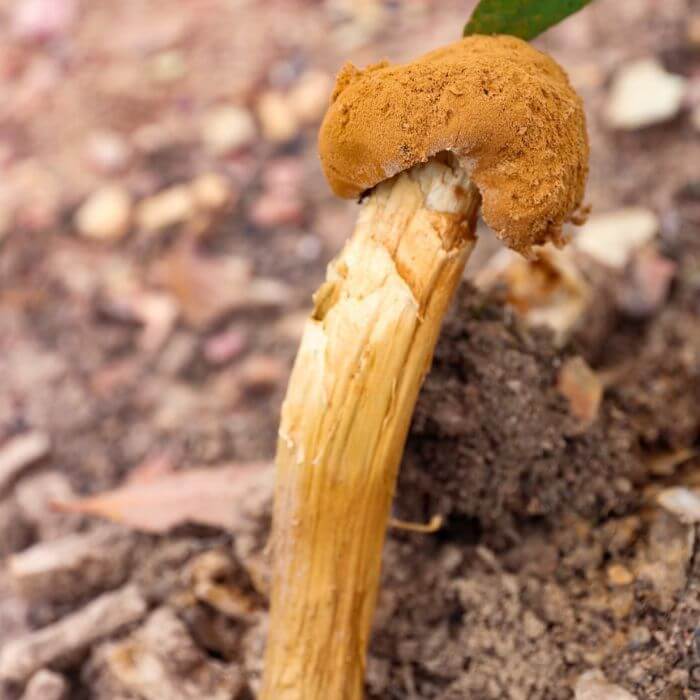
source: redwood_shroomery
Desert stalked puffballs are a fascinating species of mushrooms that thrive in desert environments.
These unique fungi have adapted to the arid conditions by growing long, slender stalks that elevate their spore-producing bodies above the sandy ground.
Standing tall amidst the barren landscape, these mushrooms present a striking sight with their large, round caps perched atop their long stems.
The size of desert stalked puffballs is truly awe-inspiring, as they can reach heights of up to three feet or more.
Their caps can measure over a foot in diameter, making them some of the largest mushrooms found in desert regions. The caps are usually smooth and white when young but may develop cracks and discoloration as they mature.
Despite their imposing appearance, desert stalked puffballs are not typically considered edible due to their tough texture and bitter taste.
5. Agaricus deserticola (Gasteroid agaricus)
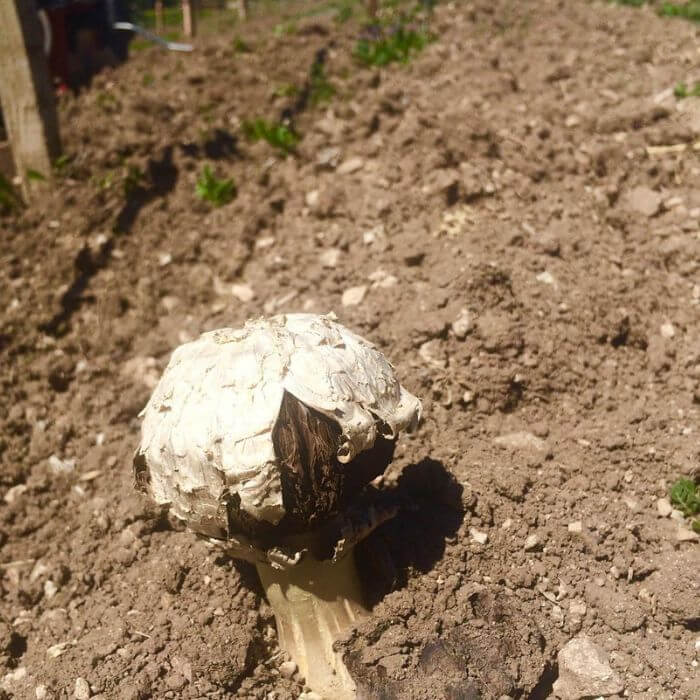
source: sevenoxen
Agaricus deserticola is a species of mushroom that thrives in arid environments, particularly deserts. This unique fungus has adapted to survive the harsh conditions of these regions by developing specific characteristics.
It typically has a robust fruiting body that grows close to the ground, allowing it to conserve moisture and protect itself from strong winds. The cap of Agaricus deserticola is usually tan or brown in color and can grow up to 4 inches in diameter.
Despite its ability to withstand arid climates, Agaricus deserticola still relies on sufficient rainfall for its growth and reproduction. When the rainy season arrives, this mushroom emerges from the dry soil, aided by its mycelium network beneath the surface.
Once above ground, it rapidly expands its cap and stem structure within a few days. However, due to limited moisture availability in most deserts, the lifespan of Agaricus deserticola is relatively short compared to mushrooms found in more temperate regions.
Related Read: Check best mushrooms for soup
6. Cynomorium coccineum (Desert Thumb)
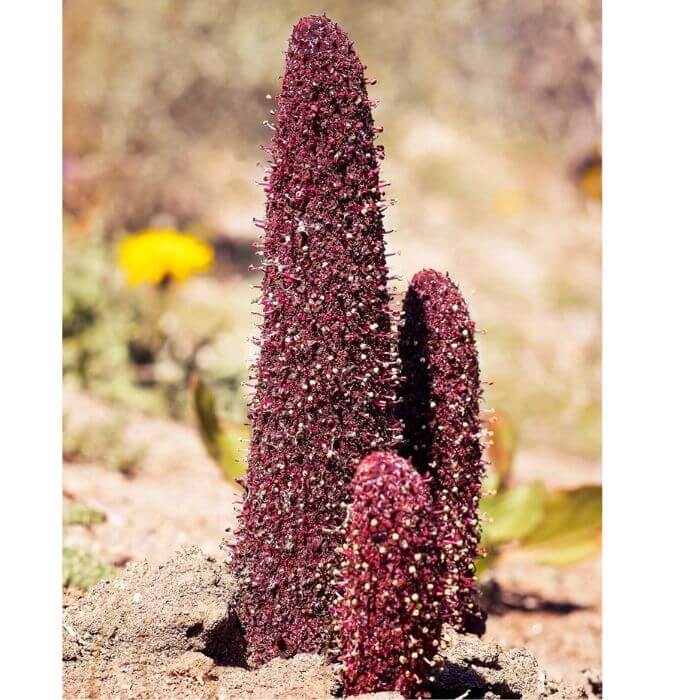
source: emsagui
Cynomorium coccineum, commonly known as the desert thumb or Maltese fungus, is a unique parasitic plant found in arid regions worldwide.
Unlike conventional mushrooms that grow on decaying organic matter, C. coccineum has adapted to survive in extreme desert conditions by attaching itself to the roots of certain shrubs and obtaining nutrients from them.
This peculiar plant has no leaves or chlorophyll and appears as dark red fleshy stems emerging from the ground.
The appearance of C. coccineum can be quite striking, especially when it blooms with small clusters of inconspicuous flowers at its tip during spring and summer months.
In some cultures, this plant has been used for its medicinal properties for centuries. It is believed to possess aphrodisiac qualities and is utilized as a natural remedy for various ailments like infertility and impotence.
7. Battarreoides Diguetii
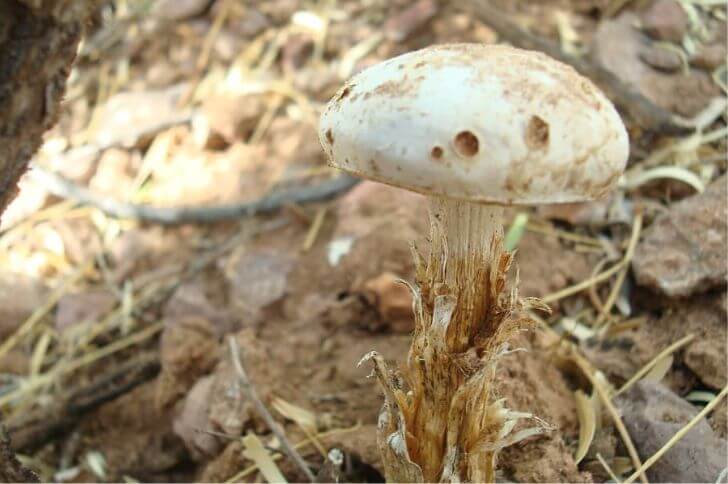
source:biodiversidadmexa
Battarreoides diguetii is a species of desert mushroom that is commonly found in arid regions. This unique and fascinating fungus thrives in the harsh conditions of the desert, making it an excellent example of nature’s ability to adapt and survive.
One notable characteristic of Battarreoides diguetii is its ability to store water within its fruiting body, allowing it to withstand long periods of drought.
Another interesting feature of this mushroom is its vibrant coloration. Battarreoides diguetii often displays shades of orange or red, which not only adds beauty to the desert landscape but also serves as a warning sign for potential predators.
The bright colors act as a deterrent, indicating that consuming this mushroom may be toxic or unpalatable.
Furthermore, Battarreoides diguetii plays an essential role in the ecosystem by forming symbiotic relationships with plants.
It forms mycorrhizal associations with various desert shrubs, providing them with vital nutrients while benefiting from carbohydrates produced by the host plant through photosynthesis. This mutualistic relationship highlights the interconnectedness and interdependence among different organisms within desert ecosystems.
Final Thoughts:
In conclusion, desert mushrooms are a fascinating and unique aspect of the natural world. Despite their harsh environment, these mushrooms have adapted and thrived in the arid conditions of the desert.
Not only are they important for maintaining the ecosystem’s balance, but they also hold potential medicinal properties that could benefit human health.
As our understanding of desert mushrooms continues to grow, it is crucial that we protect their habitats and conserve these incredible organisms. So next time you find yourself in a desert landscape, take a moment to appreciate the hidden beauty and importance of desert mushrooms.
sources:
Hi There,
My name is Jenny. I’m the Chief Editor at Try Green Recipes and besides making yummy and healthy foods for my kids, grandkids, and friends. I’m new to the blogging world but I believe what I have to share is unique and will bring joy to your home. If you are adventurous and want try something tasty, let’s get started.

